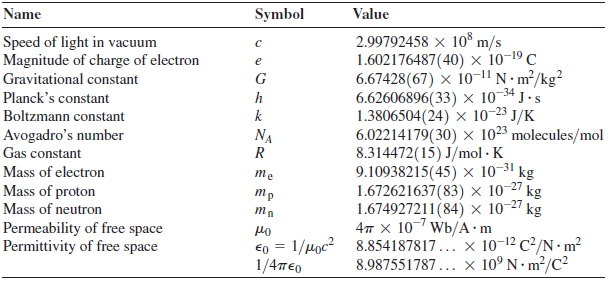Use the results of Example 13.5 (Section 13.3) to calculate the escape speed for a spacecraft (a)
Question:
Use the results of Example 13.5 (Section 13.3) to calculate the escape speed for a spacecraft
(a) From the surface of Mars and
(b) From the surface of Jupiter. Use the data in Appendix F.
(c) Why is the escape speed for a spacecraft independent of the spacecraft's mass?
In Example 13.5:
In Jules Verne's 1865 story with this title, three men went to the moon in a shell fired from a giant cannon sunk in the earth in Florida. (a) Find the minimum muzzle speed needed to shoot a shell straight up to a height above the earth equal to the earth's radius RE. (b) Find the minimum muzzle speed that would allow a shell to escape from the earth completely (the escape speed). Neglect air resistance, the earth's rotation, and the gravitational pull of the moon. The earth's radius and mass are RE = 6.38 × 106 m and mE = 5.97 × 1024 kg.
Appendix F:
Fundamental Physical Constants*

Step by Step Answer:

University Physics with Modern Physics
ISBN: 978-0321696861
13th edition
Authors: Hugh D. Young, Roger A. Freedman, A. Lewis Ford





